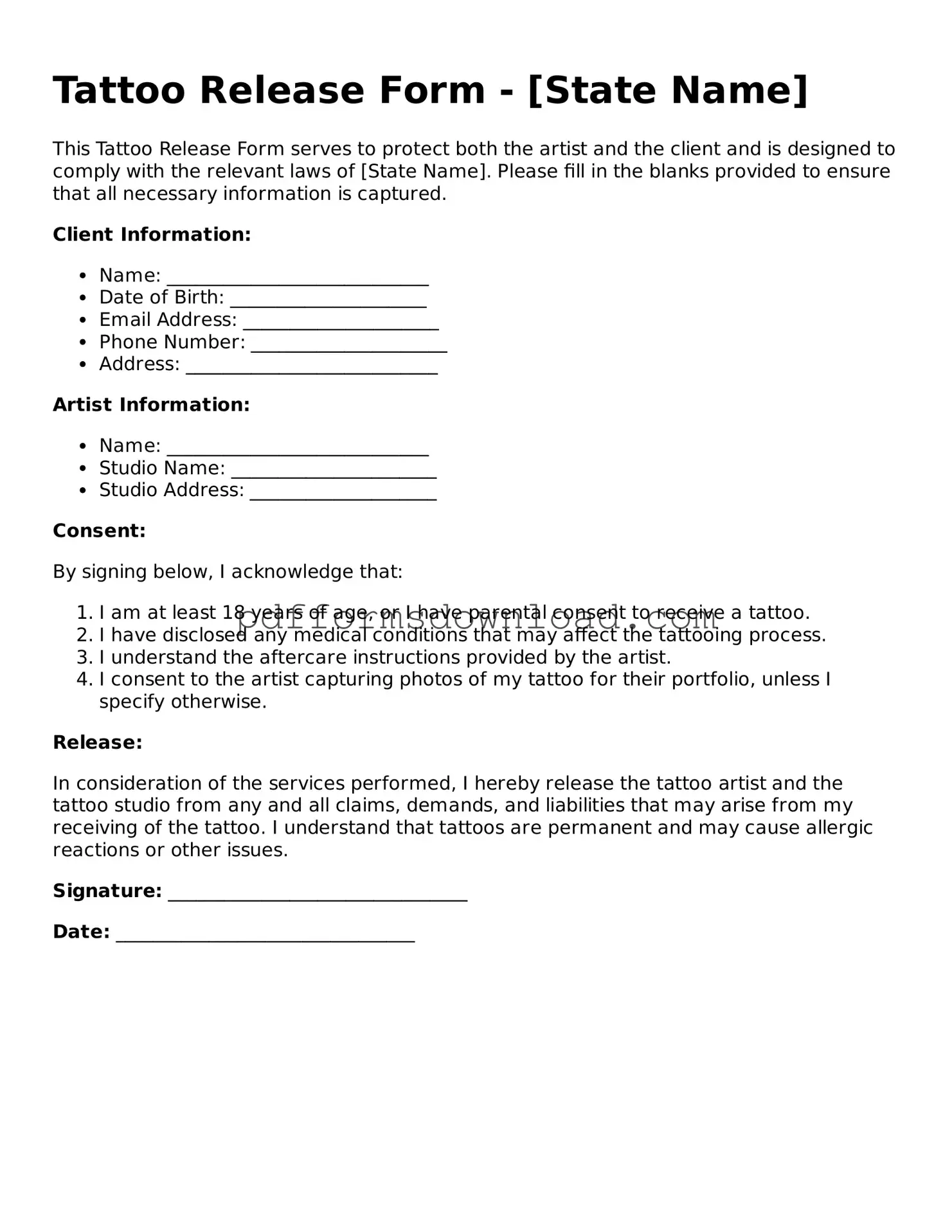What is a Tattoo Release Form?
A Tattoo Release Form is a document that clients sign before receiving a tattoo. It serves to inform clients about the tattooing process, the potential risks involved, and their rights regarding the artwork. By signing the form, clients give consent for the tattoo artist to proceed with the tattoo and acknowledge that they understand the information provided.
Why is it important to sign a Tattoo Release Form?
Signing a Tattoo Release Form is crucial for both the client and the tattoo artist. For the artist, it provides legal protection against claims that may arise from the tattooing process. For the client, it ensures they are aware of the risks, such as allergic reactions or infections, and confirms their consent to the procedure. This mutual understanding helps foster a professional relationship between the artist and the client.
What information is typically included in a Tattoo Release Form?
A Tattoo Release Form generally includes the client's personal information, details about the tattoo being requested, and a section outlining potential risks. It may also cover aftercare instructions and the client's acknowledgment of the artist's qualifications. Additionally, the form often contains a section where the client waives certain rights to legal action related to the tattoo process.
Can a client refuse to sign the Tattoo Release Form?
Yes, a client can refuse to sign the Tattoo Release Form. However, if they choose not to sign, the tattoo artist will likely not proceed with the tattoo. This is because the form is a standard practice to protect both parties. Clients should feel comfortable discussing any concerns they have about the form with the artist before making a decision.
What should a client do if they have questions about the Tattoo Release Form?
If a client has questions about the Tattoo Release Form, they should ask the tattoo artist for clarification. It is important for clients to fully understand what they are signing. Tattoo artists are usually willing to explain the contents of the form and address any concerns. Open communication can help ensure that clients feel confident and informed about their decision.
Is a Tattoo Release Form legally binding?
A Tattoo Release Form is generally considered a legally binding document, provided it meets certain criteria. For it to be enforceable, it must be clear, concise, and not contain any misleading information. However, the enforceability can vary based on state laws and specific circumstances. Clients should be aware that signing the form may limit their ability to pursue legal action in the event of an issue related to the tattoo.
